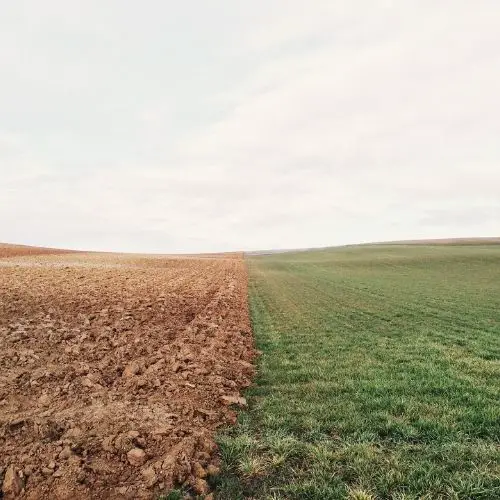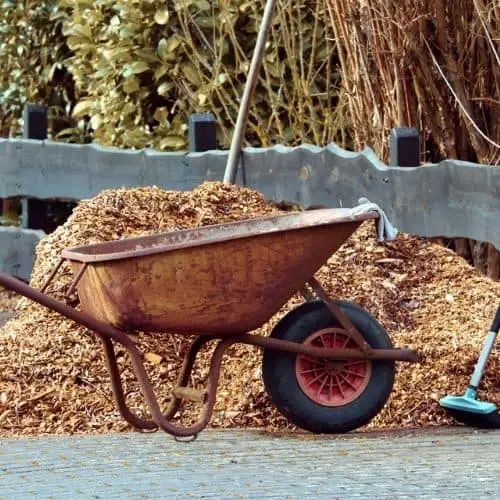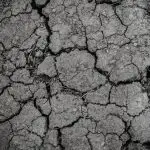
Have you ever tried planting anything? If you have then you would know how important it is to have the best soil for your plant to grow! Soil is one of the most significant factors that affect the growth of plants. Soil is the component that provides physical support to a plant and provides it with all the nutrients essential for its growth and development. Now, imagine how important it is to choose the right type of soil for trees! These big, beautiful constructions of nature will need the best, most supportive soil for their growth. If you are looking to plant a tree or if you would simply like to know what the best soil for planting trees is then this article is for you!
There are six types of garden soil; sandy soil, clay soil, silt soil, peat soil, chalk soil, and loam soil.
What are the different types of soil?
There are many different types of soil but as this article is specific to trees, we will not talk about potting soils if that’s what you are looking for.
- Sandy soil: Sandy soil is comprised of sand and clay. It is a light soil that is dry, acidic, and poor in nutrients with fast water drainage.
- Clay soil: Clay soil is comprised of clay and is a heavy soil that is rich in nutrients.
- Silt soil: Silt soil is light soil with high fertility and good water retention.
- Peat soil: Peat soil is rich in organic matter and has good moisture retention.
- Chalk soil: Chalk soil is comprised of mostly alkaline and can be either light or heavy.
- Loam soil: Loam soil is comprised of sandy, clay, and silt soils. It has high fertility as well as good drainage and water retention.
There are six types of garden soil but the loam soil has the best properties among other types of soil for tree-planting. Loam soil is the best for planting trees as it is fertile, rich in nutrients, and enables drainage as well as water retention.
How does soil help trees grow?
Soil has three main functions in tree growth:
- it facilitates the tree with essential nutrients for growth and development,
- it filters water and recycles materials,
- it serves as a habitat for several other organisms
The first function is the most important contributor to plant growth. Soil gives physical support to the tree by providing anchorage which stabilizes it. Soil also supplies the tree with essential nutrients from the environment and also absorbs the nutrients from additives.
Furthermore, soil provides insulation to the roots which help it regulate its temperature in extreme weather conditions. The spaces between particles of soil contain air that supplies oxygen to the root cells of the tree and also water that is absorbed by the roots.
Soil provides physical support to the tree, supplies it with nutrients from the natural environment and also from additives, and even regulates the temperature of the roots. In addition, the spaces between soil particles contain air and water that are supplied to the tree.
What soil is best for planting trees?
The best soil for planting trees is loam soil. Loam soil is a combination of sandy soil, clay soil, and silt soil and it is blended in a manner that minimizes the negative effects of each type of soil.
Loam soil is very fertile, rich in nutrients, and has good drainage and water retention.
When planting a tree, you will need to use soil that will provide it with sufficient physical support and biodiversity. The soil must also have good nutrient cycles, pollution filters, and water regulation. Thus, loam soil is the best for planting trees as it facilitates these processes better than the other types of soil.
Loam soil is the best for planting trees as it is fertile, rich in nutrients, and enables drainage and water retention. Loam soil has the best properties among the different types of soil for tree-planting.
How do you prepare soil for a tree?
There are several things you can observe when you are preparing the soil to plant a tree. First and foremost, make sure that you dig a hole of appropriate depth. The hole you dig should be between two to three times the size of the tree’s current root mass.
Make sure that the root flare is level with the soil and not buried deep under it. After you have planted the tree, take note to continuously improve the soil. This will facilitate the long-term growth and development of the tree.
For this, you can add organic matter, compost, and fertilizers to the soil. Be sure that you are using the right type of fertilizers depending on the soil you currently have.
Finally, consistently watering your tree can help to speed up the growth well. Provide your tree with a steady source of water, but do not overdo it. With some species, it is not necessary to continuously water your tree, but after planting it is a must. By watering the tree in the begging stages after the planting, you ensure that the tree stays alive.
To prepare soil when planting a tree, you must first dig a hole in the soil with appropriate depth according to the root mass of the plant. Secondly, feed the soil with organic matter, compost, and fertilizer that is suitable for type of soil and tree. Finally, you must continuously water your tree to ensure that the roots and soil settle.
Additional reading:
How many trees can you plane per acre
How can you improve your soil?
There are a number of things you can do to improve your soil. One of the best and highly recommended methods of soil improvement is to add organic matter and compost to the soil.
Organic matter is any carbon-based compound such as plant materials and manure. Compost is decomposed organic matter.
Feeding these components to the soil has several benefits including improved soil structure, better nutrient retention, good water absorption and drainage, neutralized pH, and protection against common plant diseases.
It is recommended to perform a soil test to identify the deficiencies in your soil so that you can supply it with what it lacks such as mulch or a specific fertilizer.
As an extra tip, Be sure to take care of the area around your tree so that weeds and the likes are not growing. Weeds will consume organic matter from living soil, leaving less for your tree to absorb.

To improve your soil, you should feed it with organic matter and compost. Perform a soil test to identify what your soil requires and supply it with what it is lacking. Ensure that the area around your tree is free from weeds and similar growths that will consume organic matter from the soil.
What is the difference between garden soil and potting soil?
Garden soil is topsoil that has been blended with organic matter. It has a heavier texture and higher water retention. Garden soil is used for plants that are planted in garden beds. It is not suitable for plants in pots because it does not have the properties that facilitate proper drainage in containers.
Potting soil is comprised of materials such as perlite, vermiculite, sphagnum, etc. Potting soil is typically sterile and maintains loose soil to facilitate proper drainage. Potting soil is used for plants in containers and is not suitable for plants in garden beds.
Garden soil is topsoil mixed with organic matter. It is only used for plants in garden beds as it has a heavier texture and higher water retention. Potting soil is a mixture of several materials that are usually sterile and loosen the soil for drainage. It is used only for plants in containers.
Here’s a great potting soil from Amazon. (Affiliate link)
Frequently Asked Questions
How do you know when soil is bad?

The biggest tell-tale sign of bad soil is when it is dry and cracked. Soil should be crumbly to allow water retention and drainage. If your soil is dry and cracked, it will not absorb water well. Other signs are discolored leaves, a purplish hue on the plant, wilting flowers, and a lack of fruits.
What is the best soil improver?
The best soil improver is undoubtedly compost. Compost is made of organic residues such as garden waste, kitchen waste, grass cuttings, and manure that have been decomposed.
What is the best soil additive for trees?
The best soil additive for trees is mulch. Mulch is typically comprised of leaves, grass cuttings, hay, straw, shredded bark, woodchips, sawdust, and paper. Mulch is spread over the surface of the soil to help the tree retain moisture better and prevent weeds from growing around the tree.
Conclusion
There is a lot more to soil than meets the eye, isn’t there? Choosing the best soil when planting can be a challenging task. The challenge does not stop there either. You have to make sure that the soil can support the growth and development of the tree throughout its life cycle.
We hope that this article enlightened you on the many properties of soil and we hope that we helped you choose the best soil for your trees! Happy planting!

Hi!
I am the guy behind Theyardable.com. I grew up on a homestead and I am here to share the knowledge I have and things I learn while living in the countryside.
